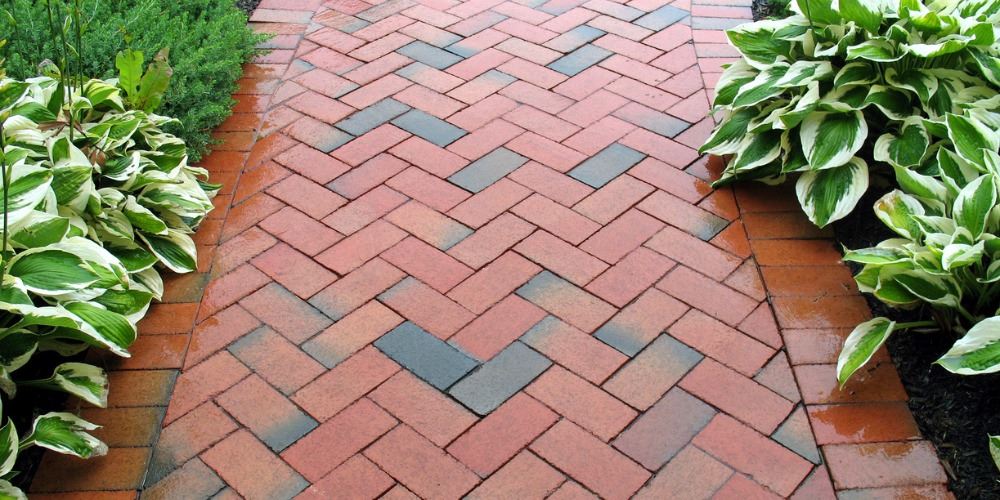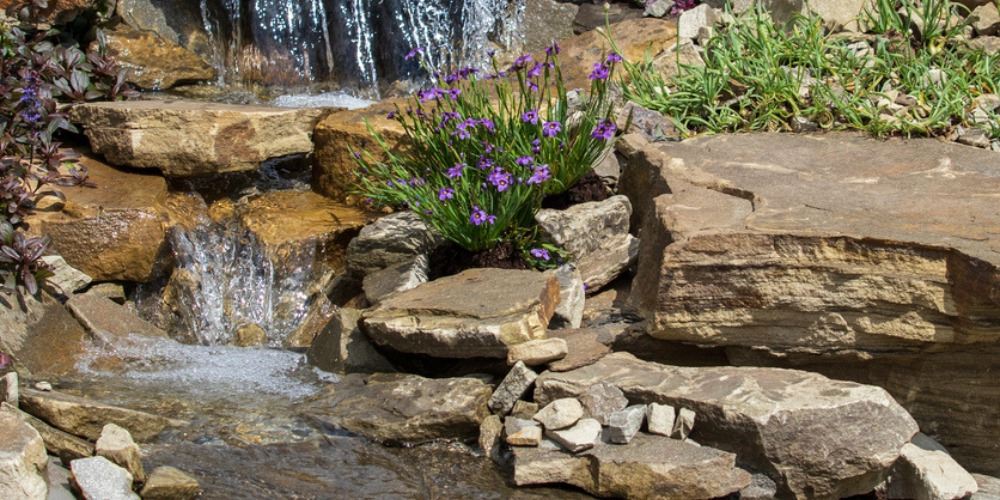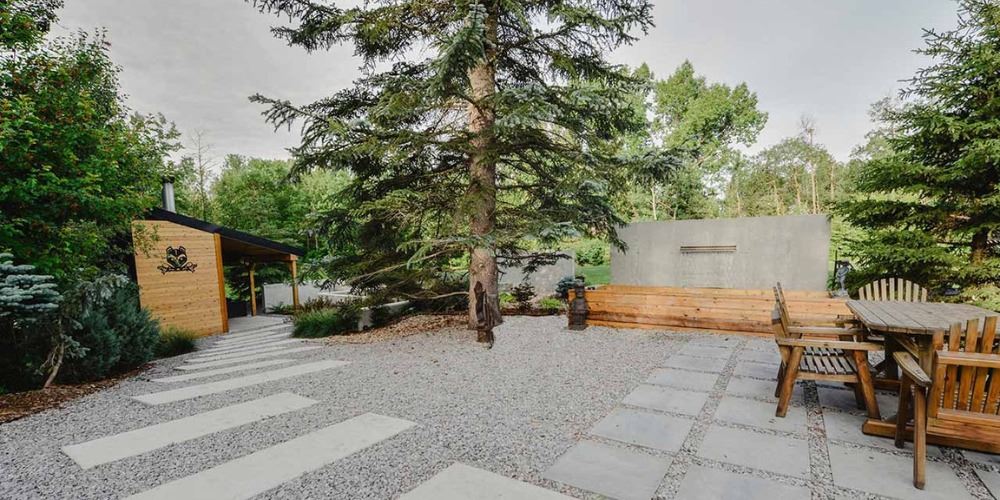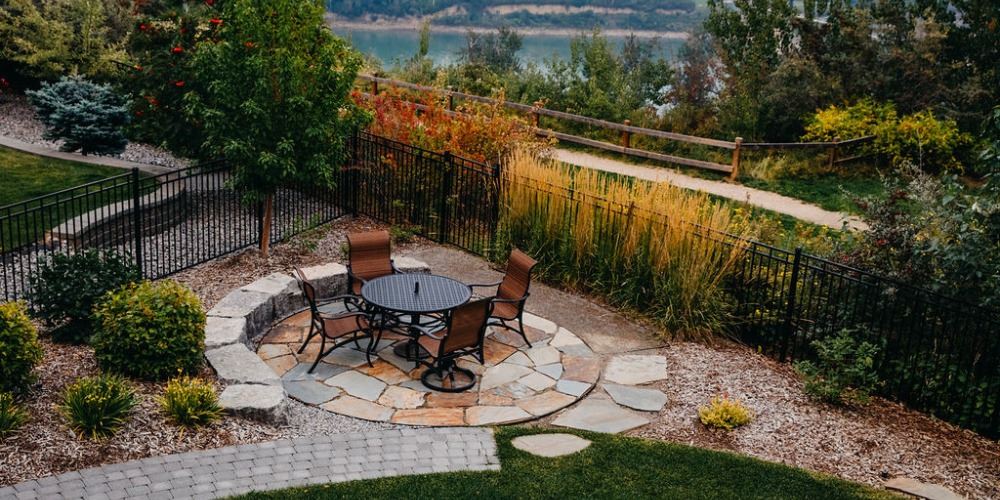Creating a beautiful outdoor space doesn’t have to come at the expense of the environment; with a sustainable hardscape, you can design a stunning, functional yard using today’s trendiest eco-friendly materials. In this guide, we’ll explore the benefits of these sustainable options, their role in improving drainage and soil health, and how you can incorporate 2024’s latest trends into your own garden. Whether you’re starting fresh or upgrading an existing space, these tips will help you create an eco-conscious landscape that’s built to last!
The Rise of Sustainable Hardscaping
Historical Context
Hardscaping has come a long way; traditionally, landscapes were built with materials that prioritized durability over environmental impact. Dense concrete, synthetic tiles, and impermeable pavements dominated landscape design in generations past, disrupting natural water cycles. In recent years, as sustainability has entered the forefront of garden design, the demand for eco-friendly materials has skyrocketed, and homeowners are now seeking ways to create landscapes that respect natural processes while maintaining a modern aesthetic.
Key Trends in Sustainable Hardscaping
Sustainable hardscaping is making waves, thanks in part to the popularity of materials that are as eco-conscious as they are beautiful. Today’s options are both plentiful and exciting, from permeable pavers that allow water to filter back into the ground and recycled materials that reduce waste to the enduring appeal of natural stone, whose earthy texture complements almost any landscape design while lasting for decades.
Benefits of Sustainable Hardscaping
What makes sustainable hardscaping so compelling is its myriad of environmental benefits. Permeable pavers, for example, allow rainwater to return to the earth naturally, reducing runoff and preventing erosion, while using recycled materials means less energy is consumed to produce new products, lowering your garden’s carbon footprint. Even natural stone, with its long lifespan, requires minimal upkeep and improves soil health by integrating seamlessly into our local ecosystem.

Sustainable Materials and Their Applications
Permeable Pavers
Permeable pavers are the backbone of sustainable hardscaping. Designed to allow water to pass through their surface, they prevent pooling and excess runoff, keeping your yard and neighbourhood flood-free. Whether used for driveways, walkways, or patios, their porous nature adds an elegant yet practical touch to any garden. They are also visually versatile, available in a wide range of styles and colours that can mimic everything from traditional cobblestone to modern geometric patterns.
Recycled Materials
Recycled materials are the undisputed champions when it comes to reducing your landscape’s environmental impact. Materials like repurposed wood, salvaged bricks, and even recycled glass aren’t just incredibly eco-conscious; they can also be used to create striking garden features. Beyond their sustainability, these materials often come with a unique story: an old barn floor might become your new patio, or shattered bottles could be reborn as colourful garden accents. Their environmental impact is just as profound, as using recycled products reduces the need for new resources and limits waste destined for landfills.

Natural Stone
There’s a timeless elegance to natural stone that makes it a favourite for eco-conscious homeowners. Sourced directly from the earth, stones like granite, slate, and limestone not only provide unmatched durability but also harmonize with their surrounding environment. Your environmental impact lessens even more if you are able to source these natural materials from close to home – less transportation and a design that blends easily into the natural environment. Unlike man-made materials, natural stone weathers beautifully over time, taking on the character of its surroundings. Its thermal properties also mean it absorbs and retains heat, making it a practical option for Edmonton’s cold winters.
Design Tips for Sustainable Hardscapes in Edmonton
When incorporating eco-friendly materials into your garden, balance is key. Permeable pavers work wonderfully for pathways and patios, recycled wood can be transformed into cozy seating areas and unique raised garden beds, while natural stone, with its organic beauty, can quickly become the focal point of your entire design as part of a serene water feature or striking stone wall. Remember: sustainable hardscaping is about more than aesthetics; always consider how each material will interact with the natural elements in your garden.

Addressing Drainage and Soil Health
The Importance of Drainage
Drainage is critical to any landscape, and sustainable hardscaping offers many effective solutions. Permeable pavers, in particular, help mitigate the risks of poor drainage—such as soil erosion, waterlogged plants, and even foundation damage—by allowing rainwater to seep directly into the ground. Proper drainage design not only protects your garden but also conserves water, redirecting it to areas where it’s needed most.
Soil Health and Hardscaping
One of the often-overlooked aspects of hardscaping is its impact on soil health. Traditional materials can compact the soil, suffocating roots and reducing biodiversity in your garden. However, sustainable materials like permeable pavers, mulch and natural stone allow the soil to breathe and retain its vitality. If soil compaction is a concern, add a few raised beds and planters along hardscaped areas to ensure your garden remains fertile and thriving.
Maintenance Tips for Sustainable Hardscaping
A well-designed sustainable hardscape requires minimal maintenance but delivers long-term rewards. That’s not to say you won’t have to put a little bit of work into it, though; permeable pavers require regular cleaning to prevent debris buildup and ensure their drainage systems remain unclogged, recycled materials may need occasional touch-ups depending on their origin, and natural stone benefits from sealing to maintain its lustre. However, by staying on top of these few simple tasks, you’ll extend the life and beauty of your hardscape for years to come.

Inspiration from the 2024 RHS Chelsea Flower Show
Highlighting Trends from Chelsea
The 2024 RHS Chelsea Flower Show introduced several exciting innovations in sustainable hardscaping. From bold, geometric paver designs to the integration of recycled materials in avant-garde sculptures, the show proved that sustainability doesn’t mean sacrificing style. Many gardens showcased the power of natural stone, with water features and seating areas becoming the stars of the landscape. A standout trend was the blending of soft landscaping with sustainable hardscape elements, creating harmonious, balanced environments.
How to Implement These Trends
You don’t have to attend Chelsea to bring these ideas home. Start small by incorporating permeable pavers into your existing landscape or experimenting with recycled materials to add character to your garden. For a truly bold statement, incorporate some natural stone seating areas or water features to both enhance your yard’s beauty and reduce its ecological footprint. Sustainable hardscaping doesn’t have to be complex—it’s about making thoughtful, intentional choices that reflect your values and lifestyle.
Incorporating sustainable hardscapes into your garden is more than just a trend; it’s a commitment to the environment and your home’s future. By embracing eco-friendly materials and practices, you can create a stunning landscape that also supports the planet. To get started on your sustainable landscape, call us today or book your design consultation online!

